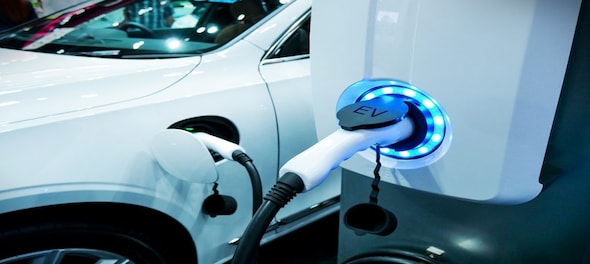
India is galloping towards a shared, connected, and electric mobility future. Pandemic blues seem to be a thing of the past with investments in the country’s electric mobility industry swelling.
Tata Motors, for instance, recently announced an investment commitment worth Rs 15,000 crore in its EV business over the next five years. Similarly, cumulative investment commitments made in the last few months by just three companies, namely C4V, Mahindra and Mahindra, and Hyundai amount to a total of more than Rs 10,000 crore. New EV sales also crossed the 2 percent mark in monthly new vehicle sales in August 2021. With the launch of market-defining products and concerted efforts from states and corporate entities in boosting demand and shoring up charging infrastructure, India’s movement towards an electric future has truly come of age.
It is time for India to build on these wins and forge a new path for itself. This moment marks an opportune time for the industry, as it is unburdened by any form of legacy baggage. There are no collective regrets to dwell on, no missed opportunities to bemoan, just optimistic visions of self-reliant progress. India does not want to be dependent on any other country for its mobility needs twenty years down the line. And the way to ensure this is by taking concrete steps today that are mindful of the needs of the future.
Over the last few years, civil society and Central and State governments have taken a plethora of measures to boost EV adoption including the provisioning of generous purchase and scrappage incentives, facilitating awareness campaigns, encouraging domestic battery production, etc. These measures, while successful, need an overarching paradigm to unify and unite all entities to supercharge India’s electrification endeavour. All stakeholders need a north star to look up to and seamlessly travel with others in that direction.
India can do this by charting a grand vision in the form of an ambitious EV adoption target. It will send out clear and unambiguous signals to all entities involved to prepare for the oncoming long gestational, seismic shift in the form of the electric revolution. OEMs, component manufacturers, and other ancillary businesses may shore up their value chains, and production and inventory capacities. Long-term investments may similarly be incrementally synthesised to undertake requisite capacity generation, entrench a dense and widely accessible charging network, and increase the share of renewables in the concerned charging mix.
A clear target will also enable a coherent policy response- moving away from policymaking in silos to achieve cross-sectoral synergy. This is pivotal to the success of EV adoption since concerted dialogue on the role of private sector, shared mobility, modal shifts, land use for charging station siting, public charging infrastructure, etc. can only happen once the end goal for adoption is clearly defined. It will also raise India’s position with respect to the Paris Agreement and the SDGs while acting as a pivot for all future conversations around EVs.
At present, more than 20 countries have specific electrification targets. The two tables below present EV sales numbers for some of those regions and countries



While it may be premature to draw any causal linkages at this stage between targets and electric vehicle sales, it is undeniable that long-term strategisation aided by clear targets has played a key role in the success of countries like China. Several countries in Europe which have announced electrification targets, including Spain, France, UK, the Netherlands etc., constitute major auto export destinations for India. The opportunity cost of not reorienting its auto value chains could manifest itself in the loss of auto manufacturing dominance for India.
SIAM suggests that India may target 40 percent of new passenger vehicle sales and 100 percent public intra-city transport electrification by 2030. Similarly, NITI Aayog in its forecasts had mentioned that India could achieve electrification of 70 percent of all commercial cars, 30 percent of private cars, 40 percent of buses, and 80 percent of two-wheeler and three-wheeler sales by 2030. Based on these assessments, realistic yet forward looking goals may be jointly identified by the government and civil society. The policies need not just have a framework for the end product but additionally support each stage of the EV value chain, in line with circular economy principles.
India may approach its target in multiple ways. The government may pursue strong electrification targets for government fleets and public transport vehicles, and aggressive emission reduction targets for two and three-wheelers. New Zealand, for instance, has mandated select government agencies to choose an EV when replacing a vehicle. On the demand side, positively exclusionary non-fiscal measures such as zero-emission zones, toll fee exemptions for EVs, specially designated parking spots etc. can gradually make ICE vehicles less desirable for the commuter and leverage the resultant reduction in consumer demand to facilitate the switch to electric.
There can be a variety of ways to get there once we know where we want to be. India is on the cusp of the greatest disruption in its automotive history. And it needs a clear and unambiguous target to set the pace for all stakeholder actions to coalesce around this common goal. The building blocks are in place; the industry is primed for the transition- all we need is a number to chase.
The author Anand Shah is Senior Advisor, Ola Mobility Institute, Shilpi Samantray is Electric Mobility Lead, Ola Mobility Institute and Yash Narain is Research Associate, Ola Mobility Institute. The views expressed are personal.
(Edited by : Kanishka Sarkar)
Check out our in-depth Market Coverage, Business News & get real-time Stock Market Updates on CNBC-TV18. Also, Watch our channels CNBC-TV18, CNBC Awaaz and CNBC Bajar Live on-the-go!


Punjab Lok Sabha elections: Check full list of AAP candidates and constituencies
May 18, 2024 12:59 PM
PM Modi, Rahul Gandhi election rallies in Delhi today: Here are the routes to avoid
May 18, 2024 11:28 AM

